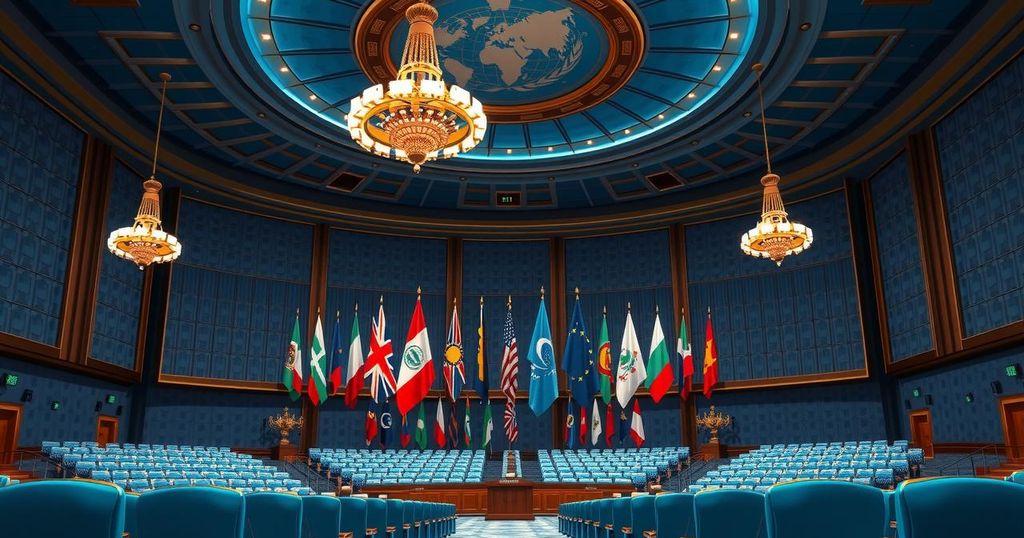President Trump’s New Tariffs: Implications for U.S.-India Trade Relations
On April 2, 2025, President Trump announced a 26% “discounted reciprocal tariff” on India, aiming to rectify perceived trade imbalances. During his address, he criticized high foreign tariffs and emphasized the need for U.S. industries’ protection. India reassured that the tariffs would not be detrimental, while reactions from global leaders highlight the potential for increased trade tensions. The announcement could significantly impact various sectors in India and spark controversy in international trade relations.
On April 2, 2025, U.S. President Donald Trump announced a 26% “discounted reciprocal tariff” on India, effectively halving India’s current 52% tariffs on American goods. At a White House event, Trump proclaimed this day as “Liberation Day,” signifying a pivotal moment in American economic rejuvenation and trade strategy. He emphasized that the tariffs signal a renewed commitment to protecting U.S. industries and jobs, which he claims have suffered under previous trade agreements.
In an address lasting nearly an hour, Trump criticized the longstanding tariffs imposed by multiple countries, declaring that the U.S. has been unfairly exploited. He remarked that high foreign tariffs on American products have caused American workers immense suffering. By instituting reciprocal tariffs, Trump argued that the U.S. will achieve fair treatment in international trade relationships.
Trump presented a comparative analysis of existing tariffs on U.S. products, highlighting discrepancies. For example, U.S. motorcycles incur only a 2.4% tariff, whereas countries like India charge significantly higher tariffs. He cited similar disparities for automobiles, stating that India and the European Union impose tariffs that starkly contrast with U.S. rates. The chart displayed during his announcement illustrated the tariffs levied by various nations, reinforcing his call for equally stringent terms in return, particularly towards India.
India responded to Trump’s announcement with assurances that these tariffs would not be a significant setback. Senior officials indicated that the Indian Commerce Ministry is evaluating the potential impacts of these tariffs while still pursuing a bilateral trade agreement with the U.S. India hopes to finalize preliminary discussions by September 2025.
Experts predict that while the U.S. may push for reduced tariffs, the imposition of these levies will adversely affect emerging markets, including India, and may not yield the intended benefits for American businesses. Various affected sectors in India, such as electronics and gems, are anticipated to experience substantial financial impacts due to these tariffs, specifically a total of nearly $14 billion in electronics and over $9 billion in gems and jewelry.
In the broader context of international trade, other countries including Thailand, Japan, and members of the European Union have voiced concerns over the implications of Trump’s tariffs. The EU’s chief expressed that such tariffs could significantly damage the global economy, echoing sentiments from various member states. Meanwhile, China has urged the U.S. to rescind these measures to foster negotiations and maintain fairness in trade practices.
Overall, Trump’s introduction of these reciprocal tariffs marks a significant shift in U.S. trade policy, one that has generated varied international responses and sparked fears of escalating trade tensions globally.
The recent announcement of a 26% reciprocal tariff on India by President Trump signifies a significant shift in U.S. trade policies. This move, framed as an effort to correct longstanding imbalances, has been met with mixed reactions from international leaders. Countries like India are assessing the implications while negating the potential impact on their economic strategies. The tariffs are anticipated to affect various sectors severely and raise concerns about the broader repercussions on global trade relations, indicating a potential for escalating tensions between the U.S. and its trading partners.
Original Source: m.economictimes.com








Post Comment